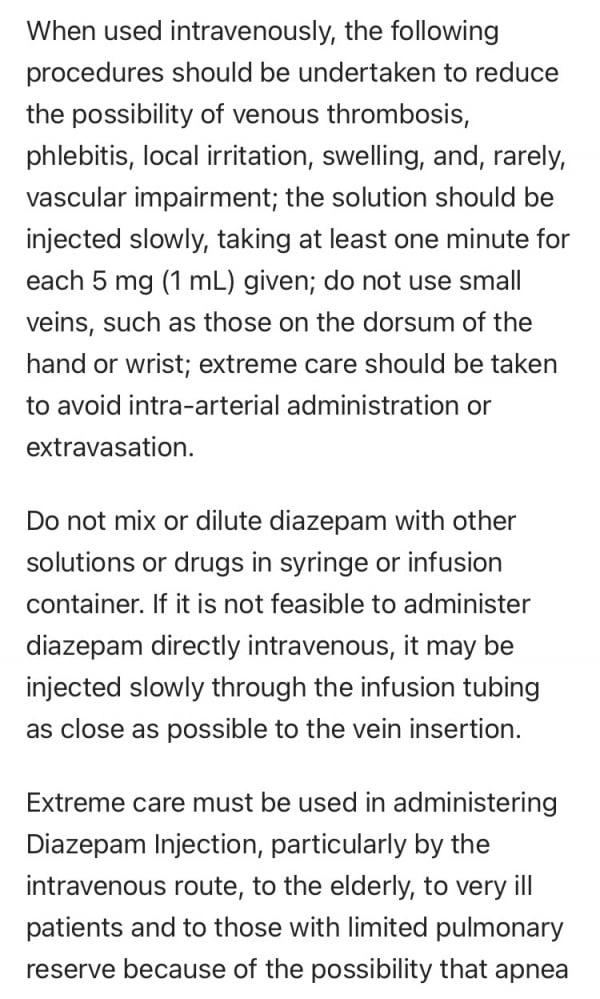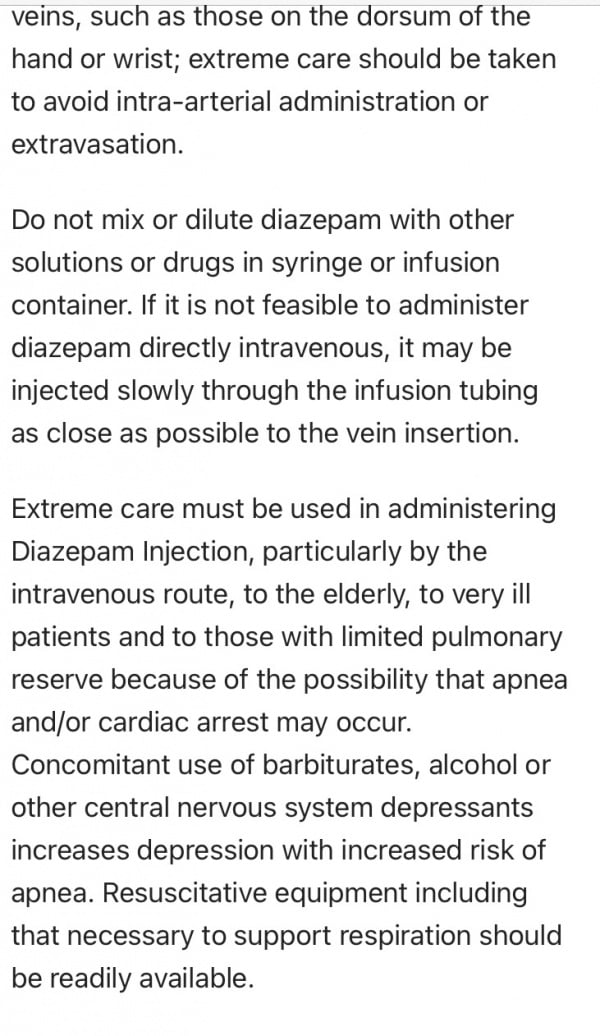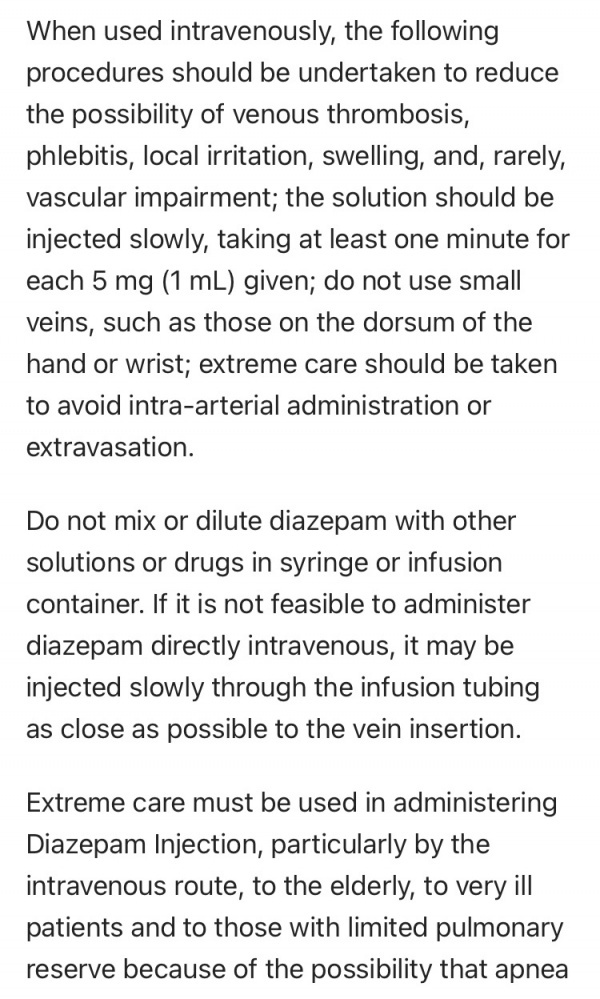- Community
-
Programs
- Schools
-
Careers
- RN Specialties
- Best RN Jobs and Salaries
- Aesthetic Nurse
- Nursing Informatics
- Nurse Case Manager
- NICU Nurse
- Forensic Nurse
- Labor and Delivery Nurse
- Psychiatric Nurse
- Pediatric Nurse
- Travel Nurse
- Telemetry Nurse
- Dermatology Nurse
- Nurse Practitioner
- Best NP Jobs and Salaries
- Family NP (FNP)
- Pediatric NP
- Neonatal NP
- Oncology NP
- Acute Care NP
- Aesthetic NP
- Women's Health NP
- Adult-Gerontology NP
- Orthopedic NP
- Emergency NP
- Psychiatric-Mental Health NP (PMHNP)
- APRN
- Nurse Educator
- Nurse Administrator
- Certified Nurse Midwife (CNM)
- Clinical Nurse Specialist (CNS)
- Certified Registered Nurse Anesthetist (CRNA)
- Resources
- Education





NurseMelly11
13 Posts
IVP Valium should not be diluted. It’s a black box warning actually. When I was a “baby nurse,” I learned this the hard way.
At any rate, you’re correct that it should be administered through the closest port, if infusing fluids. Be careful, as it is only compatible with certain fluids.
I usually stop any infusion and give in the IV hub, as this is closest to the patient, and give slowly. Verify blood return prior to administration. This is important because Valium immediately “unconcentrates” in plasma. Kind of neat actually how this works. This is why it is safely administered closest to the patient. I actually like to pull out some blood into the J-loop and then push the Valium. This helps it dilute into the blood and causes less pain for the patient. Valium does tend to burn and can cause phlebitis and infiltration if not done correctly. As stated above, you can safely dilute it in large quantities of compatible fluids, but it depends on how much you are giving and should be verified with pharmacy first. I hope this helps.